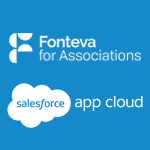Description

Outgrow

UGC Content
Comprehensive Overview: Outgrow vs UGC Content
Outgrow:
Outgrow primarily focuses on helping businesses increase engagement and generate leads through interactive content tools. Its platform allows users to create custom, personalized content such as quizzes, calculators, surveys, polls, and chatbots without any coding skills. The primary target markets for Outgrow include marketing teams, agencies, consultants, and businesses that aim to enhance their digital marketing strategies, improve user engagement, and drive conversions.
a) Primary Functions and Target Markets:
- Content Tools: Outgrow provides an easy-to-use platform for creating interactive content that can be embedded on websites, shared on social media, or sent via email campaigns. This includes creating personalized calculators, quizzes, recommendations, polls, surveys, and chatbots.
- Lead Generation: The interactive content is designed to capture audience information, making it a valuable tool for lead generation.
- Analytics: Outgrow offers analytics and insights to help users understand how their interactive content is performing and how it can be optimized.
- Target Markets: Marketing teams, digital marketing agencies, SaaS companies, and any businesses looking to increase user engagement and capture more leads.
b) Market Share and User Base: While Outgrow is a well-regarded tool in the interactive content creation space, it operates in a niche market. In terms of market share, Outgrow competes with other content marketing software and interactive content tools. It may not have the massive user bases of general digital marketing platforms, but it is favored among organizations that specifically seek to utilize interactive content to enhance engagement and lead generation.
c) Key Differentiating Factors:
- Ease of Use: Outgrow’s no-code platform allows users to create complex interactive content without technical expertise, which is a significant advantage over competitors requiring more technical input.
- Versatility: The variety of content types (calculators, quizzes, surveys, etc.) available on Outgrow's platform makes it highly versatile for different marketing strategies and industries.
- Personalization: Outgrow focuses heavily on personalization, allowing businesses to create tailored content experiences that can lead to higher engagement rates.
- Integration Capabilities: Outgrow integrates with numerous marketing and CRM platforms, enhancing its functionality within existing tech stacks.
- Focus on Engagement: Unlike some content platforms that are more static, Outgrow’s interactive elements are specifically designed to engage users actively, making it a preferred choice for brands looking to keep their audience entertained and involved.
UGC (User-Generated Content):
UGC refers to any form of content—text, posts, images, videos, reviews, etc.—that is created by users or consumers rather than the brand itself. It has become a powerful tool for brands to build authenticity, trust, and community engagement.
a) Primary Functions and Target Markets:
- Amplifying Brand Voice: UGC helps amplify a brand’s presence by leveraging customers’ voices to promote products or services.
- Building Trust: Because it’s generated by other users, UGC is typically seen as more authentic and trustworthy than brand-produced content.
- Engagement and Community Building: UGC encourages community interaction and engagement as customers become part of the brand narrative.
- Target Markets: UGC is widely used across various industries, including retail, hospitality, travel, and any sectors that benefit from social proof and consumer engagement, especially those with strong social media presences.
b) Market Share and User Base: UGC itself is not a product but a strategy used across numerous platforms and industries. Its prevalence has grown with social media expansion, as platforms like Instagram, TikTok, YouTube, and Facebook drive user content sharing. All businesses aiming for digital engagement potentially partake in UGC strategies, thus making the "market share" of UGC vast and continuously growing.
c) Key Differentiating Factors:
- Authenticity and Trust: What differentiates UGC from branded content is its authentic feel, created by real users without a promotional intent at the outset.
- Cost-effectiveness: Unlike professional content creation, UGC can be a cost-effective way for brands to maintain a steady stream of content.
- Social Proof: UGC acts as social proof, helping persuade potential customers by showcasing real-life experiences and endorsements.
- Wide Applicability: UGC can be organic and found across many platforms, making it an adaptable and multifaceted strategy.
Comparison & Summary: While Outgrow provides a platform for creating brand-driven interactive content, UGC allows brands to leverage content directly from their users. Outgrow is notably a tool within the content strategy domain, while UGC is a strategy itself employed across various platforms. Outgrow’s differentiator lies in interactive and personalized content creation, whereas UGC’s strength is in authenticity and community-driven engagement. Together, they represent complementary approaches to modern digital marketing strategies.
Contact Info

Year founded :
Not Available
Not Available
Not Available
Not Available
Not Available

Year founded :
2021
Not Available
Not Available
United Kingdom
http://www.linkedin.com/company/ugccontent
Feature Similarity Breakdown: Outgrow, UGC Content
To provide a feature similarity breakdown for Outgrow and UGC Content, let's look at each aspect you've mentioned:
a) Core Features in Common
-
Interactive Content Creation:
- Both Outgrow and UGC Content platforms typically focus on creating and managing interactive content, such as quizzes, surveys, and polls.
-
Customization Options:
- They offer extensive customization options to allow brands and marketers to align the content with their branding and design preferences.
-
Data Collection and Analytics:
- Both platforms provide tools for data collection and insights, enabling users to track engagement metrics and analyze user interactions.
-
Integration Capabilities:
- They support integrations with various third-party tools and platforms (CRMs, marketing automation platforms) to streamline workflow and data management.
-
User Engagement Tools:
- Features designed to enhance user engagement, such as feedback forms, gamification elements, and real-time response analysis, are common in both.
b) User Interface Comparison
- Outgrow:
- Typically offers a user-friendly, drag-and-drop interface that allows users to create interactive content without needing coding skills.
- Emphasizes simplicity and speed, making it easy for marketers to develop content quickly.
- UGC Content Platforms:
- User interfaces can vary significantly among UGC tools, but they often focus on providing community management tools, content moderation, and collaboration features.
- Interfaces might be more oriented toward managing the flow of user-generated content and integrating it with branded content.
c) Unique Features
- Outgrow:
- Content Templates: Outgrow comes with a wide array of pre-made templates for quizzes, calculators, and other interactive content types that users can easily modify.
- ROI Calculator: A specific feature allowing businesses to calculate potential ROI from their marketing efforts.
- Personalized Recommendations: Advanced logic settings to provide personalized outcomes to users based on their interactions.
- UGC Content Platforms:
- Community Built-in Features: Some platforms provide features tailored for community engagement, such as discussion forums or social media integration.
- Content Moderation Tools: Enhanced moderation capabilities to handle large volumes of user-generated content efficiently.
- Dynamic Content Display: Enables showcasing of dynamic content that automatically changes based on user preferences and behavior.
These insights reflect a general overview and can vary significantly based on specific platform offerings and updates. For precise details, considering a demo or direct comparison via trials might be beneficial.
Features

Customization Options
Analytics and Insights
User-Friendly Content Creation
Lead Generation Tools
Support and Resources

User Privacy and Data Security
Analytics and Reporting
User Engagement Features
Content Moderation Tools
Content Customization
Best Fit Use Cases: Outgrow, UGC Content
Outgrow and UGC (User-Generated Content) platforms cater to different needs and can be highly effective in certain scenarios. Here's how they align with business needs:
Outgrow
Outgrow is designed for creating interactive content such as calculators, quizzes, surveys, chatbots, and polls. It is an excellent tool for businesses looking to increase engagement and generate leads through interactive marketing.
a) Best Fit Use Cases for Outgrow
-
B2B and B2C Companies:
- Lead Generation: Companies that need to generate quality leads can use interactive content to capture user information effectively.
- Customer Engagement: Both B2B and B2C companies can use interactive elements to engage customers and provide personalized experiences.
-
Marketing Agencies:
- Content Marketing: Agencies looking to enhance their content marketing strategies can leverage Outgrow to create engaging interactive content for clients.
-
Finance and Healthcare:
- Personalized Calculators: Companies in finance (e.g., mortgage calculators) and healthcare (e.g., BMI calculators) can use Outgrow to provide valuable tools to their clients.
-
E-commerce:
- Product Recommendation Quizzes: E-commerce sites can create quizzes to help customers find the right products, thus increasing conversion rates.
-
Education and Training:
- Interactive Learning Modules: Educational institutions or training companies can create quizzes and assessments to engage learners.
UGC (User-Generated Content)
UGC platforms are ideal for businesses that want to leverage content created by their consumers, fostering community and enhancing authenticity.
b) Scenarios for UGC Content
-
Consumer Brands and Retail:
- Brand Advocacy: Retail brands can use UGC to showcase real customers using their products, enhancing brand trust and authenticity.
- Social Proof: UGC serves as social proof, influencing purchasing decisions by leveraging content from actual users.
-
Travel and Hospitality:
- Authentic Experiences: Travel companies can encourage guests to share their travel experiences, creating a rich pool of authentic content.
- Community Building: UGC helps build a sense of community among travelers and guests.
-
Fashion and Beauty:
- Style Inspiration: Fashion brands can showcase diverse styles and looks from actual customers, providing inspiration and real-world applications.
- Influencer and Customer Collaboration: Beauty brands can collaborate with influencers and customers to create a diverse range of content.
-
Technology and Gaming:
- Fan Engagement: Gaming companies can leverage UGC to engage fans, allowing them to share gameplay experiences and reviews.
- Beta Testing and Feedback: Tech firms can use UGC for product feedback and beta testing insights.
d) Catering to Different Industry Verticals or Company Sizes
-
Outgrow:
- Industry Vertical: Can be adapted to any industry needing personalized engagement, from finance to healthcare.
- Company Size: Suitable for startups to large enterprises due to its scalable nature.
-
UGC Content:
- Industry Vertical: Particularly effective in consumer-facing industries like retail, travel, and fashion.
- Company Size: Works well for all, but particularly beneficial for medium to large enterprises aiming to enhance brand authenticity and community engagement.
Both Outgrow and UGC platforms offer distinct advantages depending on the business's goals, enhancing engagement through interactivity and authenticity, respectively. By understanding their unique strengths, companies can better leverage these tools to meet specific marketing and business objectives.
Pricing

Pricing Not Available

Pricing Not Available
Metrics History
Metrics History
Comparing teamSize across companies
Conclusion & Final Verdict: Outgrow vs UGC Content
To provide a conclusion and final verdict for Outgrow versus UGC (User-Generated Content) Content, let's analyze each aspect step by step.
a) Best Overall Value
Outgrow generally offers a more dynamic and interactive experience through its tools for creating quizzes, calculators, polls, and more, which are excellent for engaging users and collecting data. On the other hand, UGC Content taps directly into the community, relying on real users to create authentic content which can enhance brand trust and social proof.
Best Value: Outgrow provides the best overall value if the primary goal is to engage users with interactive content and gather data efficiently. However, if the aim is to build community and leverage authentic testimonials or brand stories, UGC Content might offer better value.
b) Pros and Cons
Outgrow
Pros:
- Offers a variety of interactive content templates (quizzes, calculators, etc.).
- Provides detailed analytics and insights into user engagement.
- Allows for easy integration with CRM and other marketing tools.
Cons:
- May require more initial setup time to tailor content to specific needs.
- Could be less effective in building community or brand loyalty compared to authentic UGC.
UGC Content
Pros:
- Leverages community-driven content that can build trust and authenticity.
- Cost-effective as the content is generated by users.
- Can enhance social proof and provide genuine testimonials.
Cons:
- Content quality can be inconsistent and require moderation.
- Relies heavily on active community participation, which may not always be guaranteed.
c) Recommendations
-
Identify Your Goals: If your primary objectives involve increasing user engagement through interactive content or collecting detailed user data quickly, Outgrow would be a suitable choice. Conversely, if building trust and enhancing brand authenticity are your main goals, UGC Content may be the more strategic option.
-
Consider Your Resources: Outgrow may require more resources (time and expertise) for set-up and maintenance, while UGC Content might require robust community management to ensure quality and relevance.
-
Integrate Strategically: For businesses wanting the benefits of both, an integrated approach may work best. Use Outgrow to engage users initially and collect valuable data and then leverage that data to encourage UGC, fostering brand advocacy and loyalty.
In conclusion, the decision between Outgrow and UGC Content should be driven by your specific business needs, target audience, and resource availability. Both have their unique strengths and can even complement each other when used strategically to optimize engagement and community-building efforts.
Add to compare
Add similar companies




